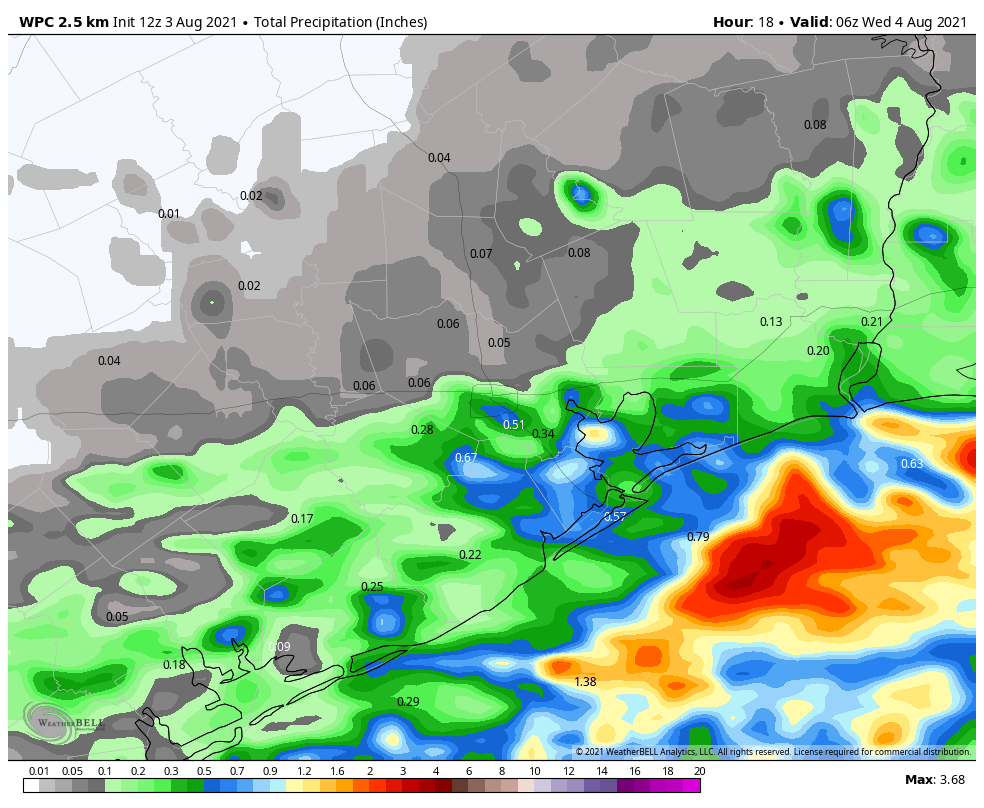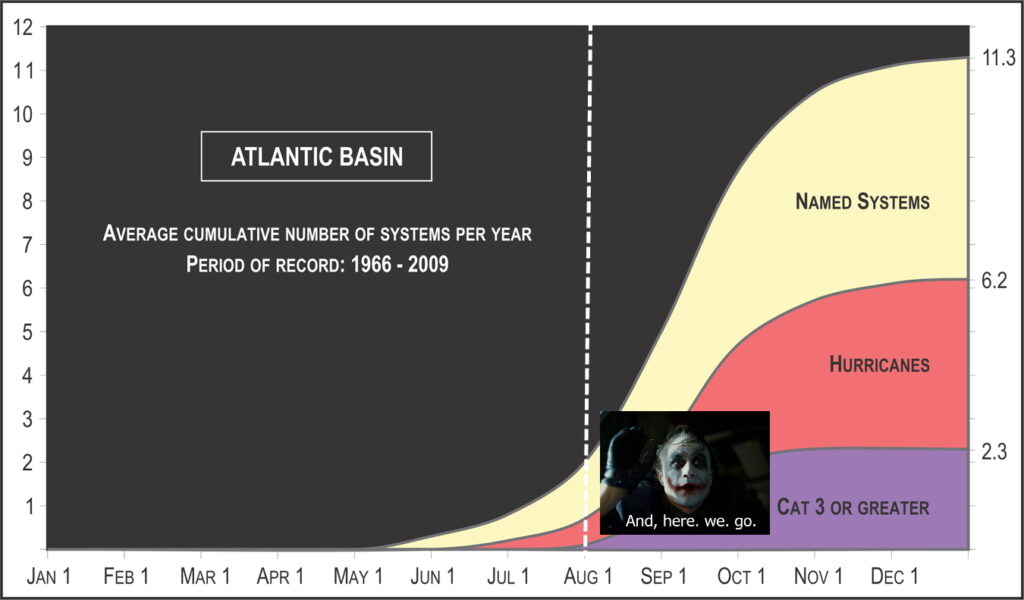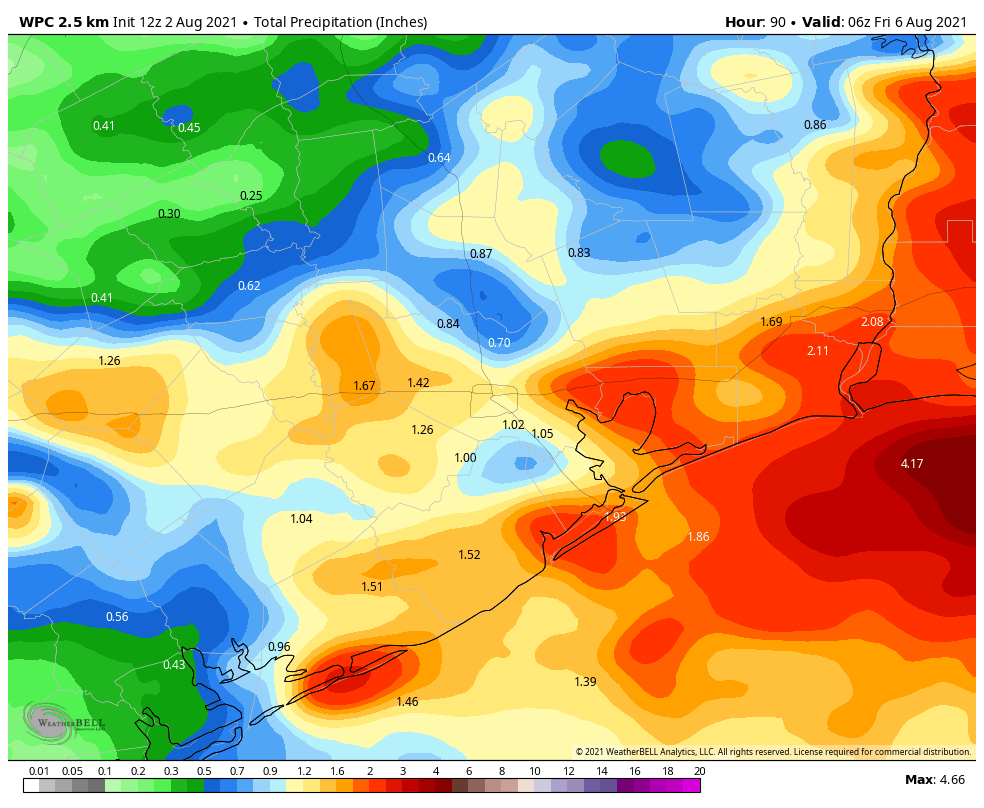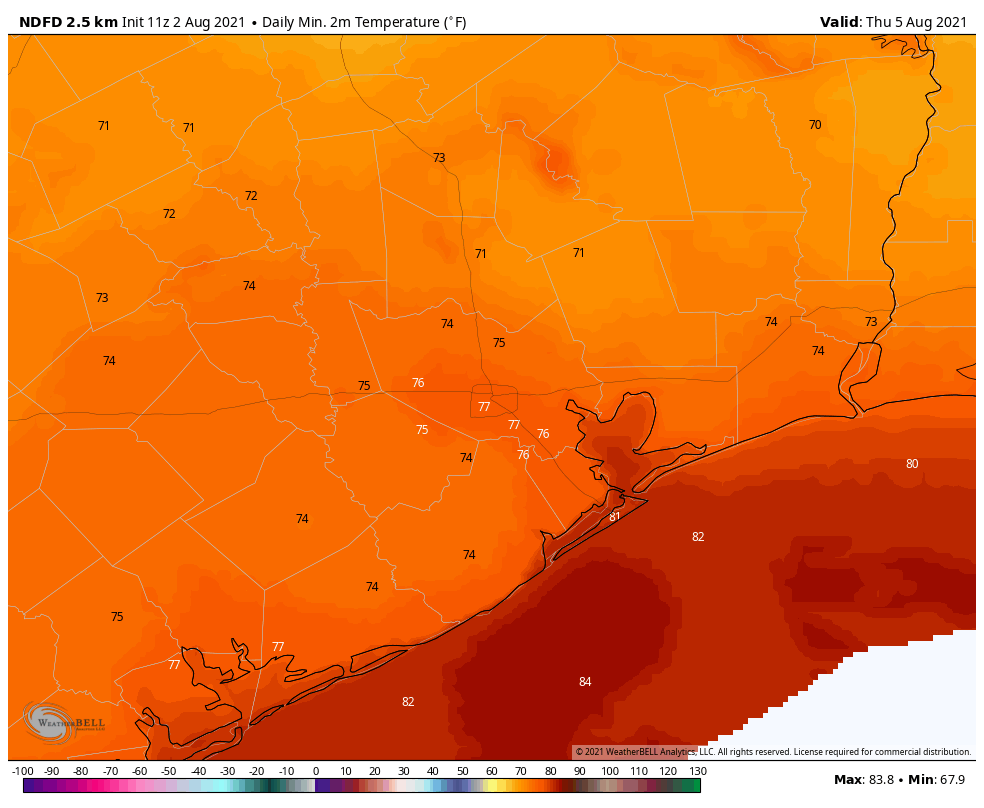Lately, I’ve enjoyed opening these posts with a comparison to where we were in 2020 at this time. By August 3rd of last year, we were watching Hurricane Isaias approach the East Coast, and Tropical Depression 10 had recently dissipated. We were actually heading into a lull period, as Josephine would not form for over a week. This year, we remain stuck on Elsa as our last storm. It was great to have a quiet July, but as Eric noted yesterday, we are merely through the easy third of hurricane season. The most likely time for storm impacts here historically is the next 6 to 8 weeks. Of the major hurricanes to strike our region through history (Cat 3+), virtually all have occurred in August or September. The 1909 Velasco Hurricane was an exception, as it occurred in July. So, now is the time to start watching seriously.
Tropical outlook in a sentence
While the noise is going to increase and we are likely to begin to find some disturbances to monitor in the Atlantic over the next week or so, none appear to be overly serious candidates to end up in the Gulf at this time.
Current Atlantic disturbance
The current disturbance outlined by the National Hurricane Center as having a 10 percent chance of developing over the next 5 days is not really much of a concern for us at this point in time. I think we need a little time to start priming the basin, so while this one may make a little noise in the next few days, it seems unlikely to sustain itself.
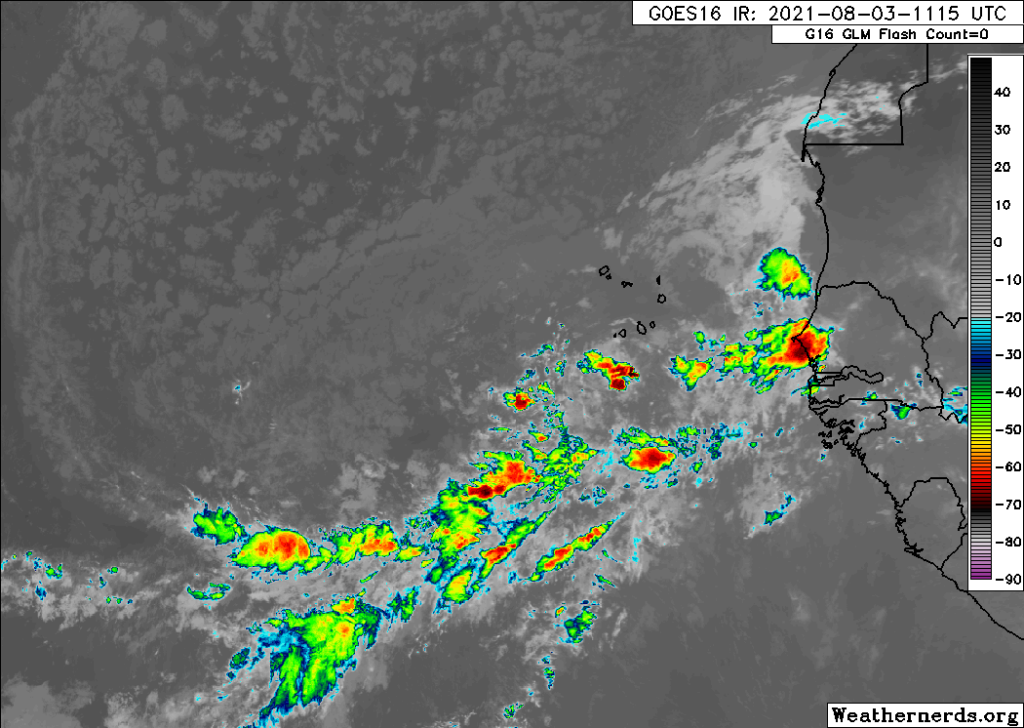
Most ensemble members of the major models have this thing flailing around for 72 to 96 hours and not doing much. Thereafter, things could change, but that could also be courtesy of another disturbance. Which leads us to…
Next in line
In general, it’s a little noisy in the eastern Atlantic right now, so it’s tough to separate signal from that noise at this early stage in the game, even in modeling. But either the disturbance currently outlined by the NHC or, more likely, another one should begin to try and coalesce from the mess in about 5 to 7 days in the open Atlantic.
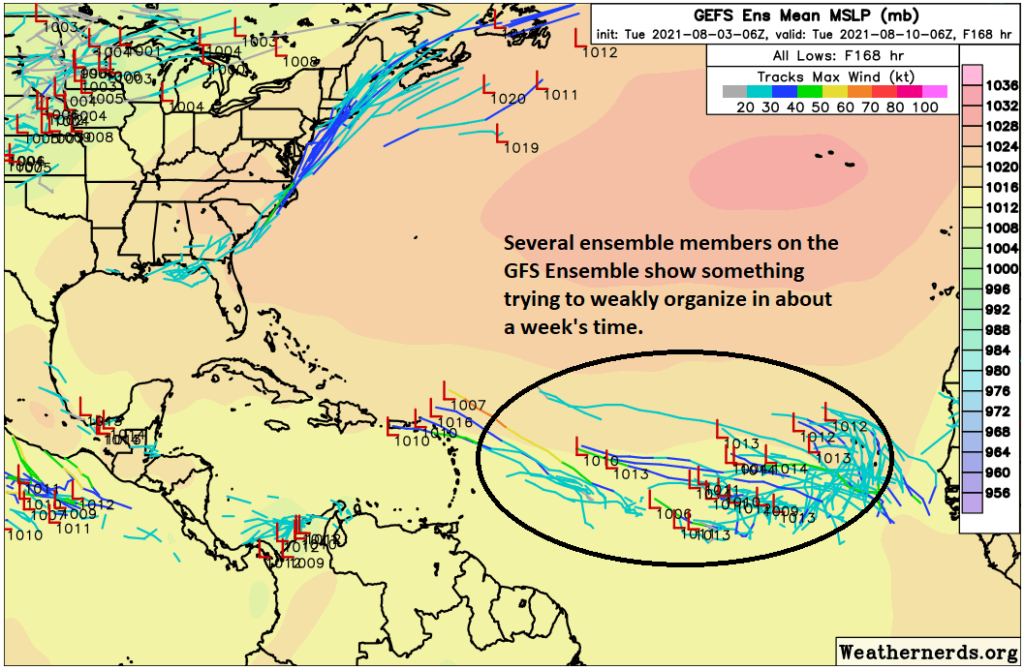
At this early juncture, trying to hash out what this does is very uncertain. Right now, the vast majority of ensemble members either kill this disturbance off or have it recurving over the open Atlantic. Few, if any are taking it to the Gulf. We have about 80 different ensemble members between the GFS & European ensemble models, which provides a nice, wide spread of plausible outcomes. But by no means is it a guarantee that we’ll see either of those scenarios (a recurve or a dissipation) play out. But it seems to be the favored outcome at least at this time.
But, let’s focus on the overall pattern as forecast by the GFS and European ensemble models beginning around day 10 to see if there are any clues. Let me start by showing you wind shear. Both the GFS and European ensembles show a fair amount of wind shear setup over the Central Atlantic — for days.
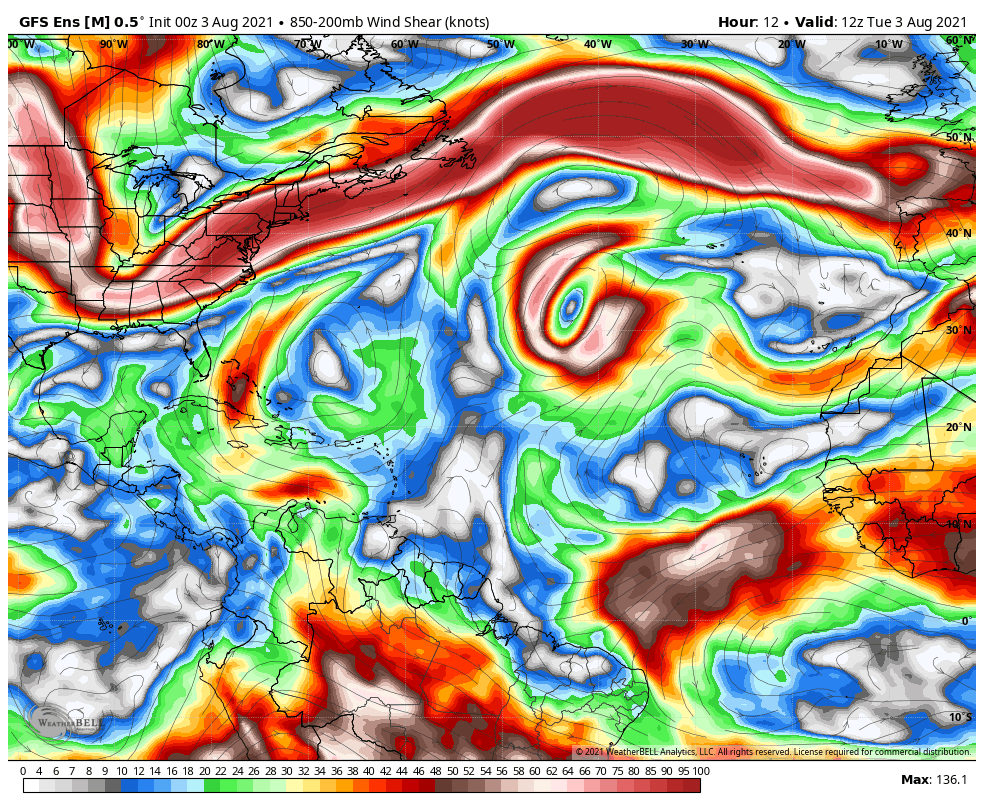
This makes sense at a high level, and this seems to lend some credibility to the idea that whatever does develop may have some challenges in front of it as it moves across the ocean. Closer to home, the shear relaxes a bit, but until we see a disturbance heading that way, it’s not too concerning.
So where will it track? Great question. If we compare the GFS ensemble & European ensemble forecast maps at the 500 mb level (about 20,000 feet overhead) on day 10, I’ve annotated the maps with some notes.
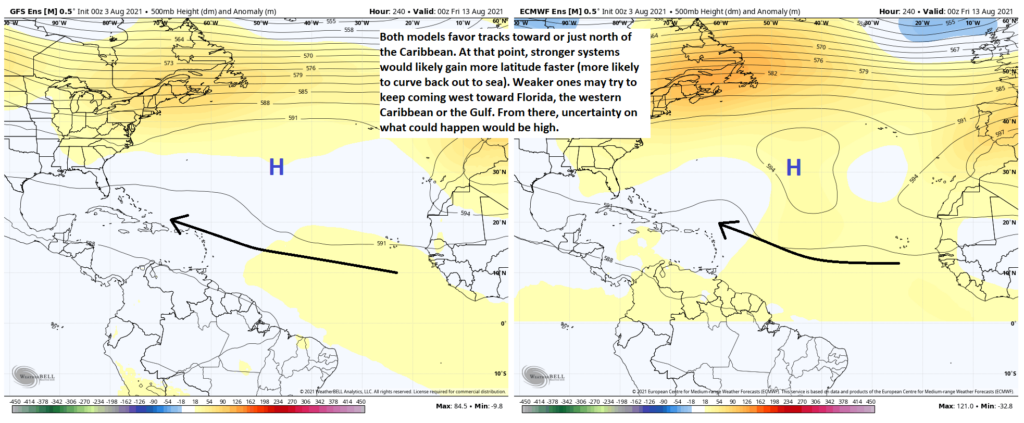
There is a fairly strong high pressure in the upper atmosphere over the ocean. It’s not overly strong, but it may be enough to allow a weaker system to get kicked westward a little farther than perhaps models currently say. The general rule of thumb with Atlantic and Caribbean systems is that a stronger storm will gain latitude faster and a weaker disturbance will be subject to being “bullied” by high pressure and shoved west a little farther. Of course, if this fails to coalesce into a system at all, the point is moot and all the better.
So at this point it’s nothing to worry about because even through day 15, hardly any reliable model guidance has anything of note looking like it will enter the Gulf. But, given the calendar and trajectory of the disturbances out there, Eric and I will be keeping tabs on things, though not talking much unless it becomes apparent that we’re going to have something legitimate to watch.
Beyond this day 10+ stuff in the Atlantic, there will likely be continued background signal support for further disturbances through August 15th to the 25th or so. There may be some signs of less supportive conditions arriving later in the month, and when you factor in some lag time, that could start to assert itself in September. But I’d rather not get my hopes too high just yet. This concerns the “velocity potential” maps we discussed last week. A colleague and PhD candidate at Florida State, Jake Carstens, wrote a great piece on those maps and how they’ve been used to help sniff out this upcoming active period. He did a great job explaining how those maps work and it’s worth your time if you’d like to really get more into some serious meteorological analysis.
Anyway, enough for this week. We’ll see where things stand when we check back in on the tropics next week!

